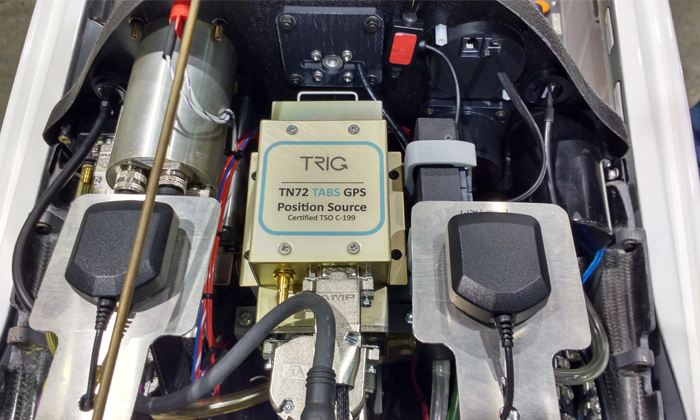Halon Phase-out: The 2025 Fire Safety Mandate
❌ The End of Halon Halon has long been the...
Read more Back to News
Back to News

the hard facts.

Safety Issues by aggregated ERCS score and numbers of accidents and serious incidents involving non-commercially operated small aeroplanes (source: EASA Annual Safety Review 2020)
General Aviation is despite of the Covid-19 pandemic a stable activity involving in Europe alone 10 times more aircraft and airfields than in commercial air transport (CAT). Aviation statistics of the EASA show 1442 serious or fatal injuries between 2009 and 2019 involving non-commercially operated small aircrafts. There is clear need for development in GA safety.
EASA identified three key risk areas in The European Plan for Aviation Safety (2021-2025): aircraft upset, terrain and airborne collision although runway excursions are low risk of fatal or serious injuries despite of their common occurrences. On the other hand, mid-air collisions are a lot more dangerous. In busy skies flying too close or colliding with an unseen aircraft can happen. Most pilots will admit near-misses when they avoided a collision with just seconds to spare. EASA statistics show that mid-air collisions affect both newbies and experienced pilots, they can occur in all phases of flight and at all altitudes. However, the vast majority of them happen in daylight and in excellent weather conditions.
These statistics give an important lesson to us: we can’t rely merely on our vision while flying. You will not be able to see the area above you when sitting in a Cessna and you will not be able to see the air below you when sitting in a Piper or Diamond. Challenging lighting conditions like striking sunlight or rainy, hazy skies can affect your visibility. It is enough if you get distracted for a moment by the radio or a passenger to disturb your awareness of dangerous situations.
ADS-B explained and why you should have it installed.

(Source: ADS-B Explanation by Trig Avionics)
To avoid the dangers of mid-air collisions, you should upgrade your aircraft with an electronic conspicuity equipment. ADS-B (Automatic Dependent Surveillance-Broadcast) has become a widely excepted means of monitoring aircraft movements providing critical information to both pilots and ATC. Since the 1940th radar has been the primary surveillance method, now its time for general aviation safety to arrive in the 21th century. Through the satellite-based technology you will gain a number of advantages:
how it works.
ADS-B is a common standard that is internationally well established. It has been established in commercial aviation operating above 18,000 feet for many years. Now, in common with airliners, GA aircraft fitted with an ADS-B Out capable Mode S transponder will use something known as ‘Extended Squitter’ to transmit ADS-B Out data. The Extended Squitter is in effect an extended portion of a transponder’s transmission bandwidth. This contains a data packege of ADS-B information. This data packege holds unique identifying information about an aircraft, its flight position, speed and profile.
This method is by far the most practical means to become ADS-B Out equipped. In April 2019 EASA released CS-STAN Revision 3, this simplifies the installation process for ADS-B Out and allows the use of existing GPS technology. As an example, an EASA certified aircraft with a Trig transponder only needs an additional two wires to be connected from an existing GPS to become ADS-B Out capable.
get equiped with TRIG.
Europe’s most popular Mode S transponders are made by Trig Avionics. Flying with a Trig Mode S transponder allows access to Controlled Airspace and Transponder Mandatory Zones, this is a real benefit for pilots. ADS-B Out uses a Trig transponder, connected to a GPS, together they provide this vital positional data. Trig offers a stack transponder, the TT31 or a compact transponder called the TT21. While both models are ADS-B out capable, the latter has been designed to fit in the tightest panel space.
By adding a TN72, GPS Position Source your ADS-B output provides ‘Quality Indicators’ that that are greater than zero (SIL/SDA1). This is superior technology and makes you visible to all traffic systems. Trig Avionics offers a certified ADS-B Out solution which is crucial if you plan for an ADS-B upgrade since you want that position data as accurate as possible.
This technology has genuine safety benefits, enhancing your aircraft’s electronic visibility to other ADS-B In equipped aircraft. In those areas where ADS-B is not mandated, its voluntary use is growing fast. Today, more and more pilots are improving their visibility by fitting a Trig transponder with a suitable GPS to being able to broadcast ADS-B data.
fit your aircraft with an ADS-B capable transponder & save money on the long run!
Trig offers transponders that meet international standards for 1090ES ADS-B Out and are easy to install. By fitting your aircraft with an ADS-B Out capable transponder now, you will also save money since you don’t have to buy an other unit later and also save on installation. ADS-B is the future and its mandatory use is only a matter of time. Since it enhances aviation safety and allows more efficient air traffic, the utilization of ADS-B is benefitial for all participants of the industry.
If you need more information about Trig products or ADS-B:
ask your aps | Contact for advice »
Trig Avionics Technical Brief »
For more safety, read about ADM, a systematic decision-making approach to a safe mind-set:
❌ The End of Halon Halon has long been the...
Read more✈️ The Corrosion Challenge Corrosion is more than just rust—it’s...
Read moreWe are excited to announce our participation in AERO 2025,...
Read more